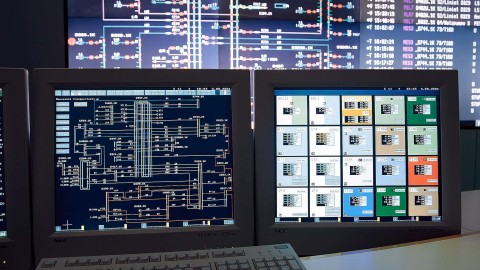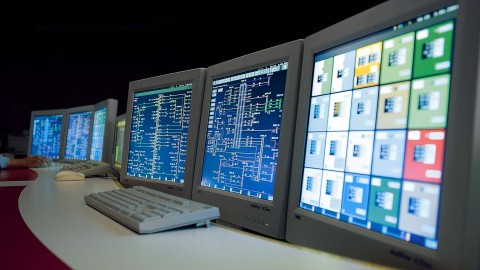Building automation systems and tasks
What is building automation? What software can be used for operations and what key functions should the system provide? What are the primary tasks of building automation and what laws and regulations govern its use?
This article provides answers to these fundamental questions.
Definition of modern-day building automation
In today’s digital world, “building automation” mainly refers to the software used to monitor and control the various automated systems in modern buildings, including heating, ventilation and air-conditioning; lighting and shading systems; and surveillance and access control systems.
You can read about the evolution of building automation from its beginnings to the present day in our article, “ Today’s take on building automation ”.
Manufacturer-dependent or -independent software?
The software is usually deployed on a server. Many systems now support communication protocols such as BACnet, LON, OPC and ModBus. Manufacturer-dependent systems that communicate over proprietary interfaces are the exception, not the rule.
In our article, “ Energy management in building automation ”, we explain why you should prefer manufacturer-agnostic solutions.
What building automation does – short-term action, long-range planning
Monitoring and controlling in building automation
The main immediate benefit of building automation is the ability to respond remotely in a quick, coordinated fashion to a system condition or malfunction (such as a fan breakdown). These tasks are generally governed by a clear order of priorities that stipulates response times for certain situations. In the case of our broken-down fan, the appropriate department would be promptly notified of the failure and the problem fixed.
24/7 on-call technical support is a good idea for many buildings, not just large ones. The central building automation system lets support agents act immediately in situations such as an unauthorized person accessing a secure area.
Building automation – one system for all building data and measured values
The building automation system (BAS) captures and models current process data. That makes it a kind of user interface for building equipment. This real-time data includes operating states of individual components such as ventilation dampers, motors or valves; switch positions; errors reported; and past and present utility consumption (electricity, water, steam, etc.).
The BAS also records directly measurable values such as temperature, air pressure and relative or absolute humidity. All the data goes into generating analyzable diagrams that show the long-term energy management benefits of building automation and the resulting energy savings opportunities.
The Building Management Cockpit (BMC) is a central monitoring tool that provides extensive visibility into costs and equipment availability.
Some of the biggest long-term benefits of smart building automation include a reduction in operating and heating costs as a result of better energy management. The data obtained by the BAS is visualized in a simplified fashion, which makes it much easier to analyze.
Data generated through long-term equipment monitoring is generally checked against a database with a long-term archive containing consumption data at various equipment settings. Some systems provide visualization out of the box; others require additional visualization software. Data visualization generally allows the generation of reports that personnel can evaluate even if they have not received technical training.
Building automation standards and regulations
There is a growing tendency for large, complex systems to be monitored and controlled externally. The most important standard in this regard is Directive 2006/42/EC (Machinery Directive), which sets out all the requirements that monitoring and controlling has to meet. Another key consideration is worker safety when using equipment, whether properly or improperly. This is governed by EN 60204. Every system has to undergo a risk assessment under the Machinery Directive. External service providers can leverage their knowledge base to ensure compliance with these requirements, especially when installing new systems or subcomponents.
Factsheet: “Fast track to a smart building”
Our whitepaper, “Fast track to a smart building”, gets down to brass tacks! We show you how to make your energy management far more efficient with a four-phase process.
If you have technical difficulties sending the form, please contact us by e-mail at [email protected] .





